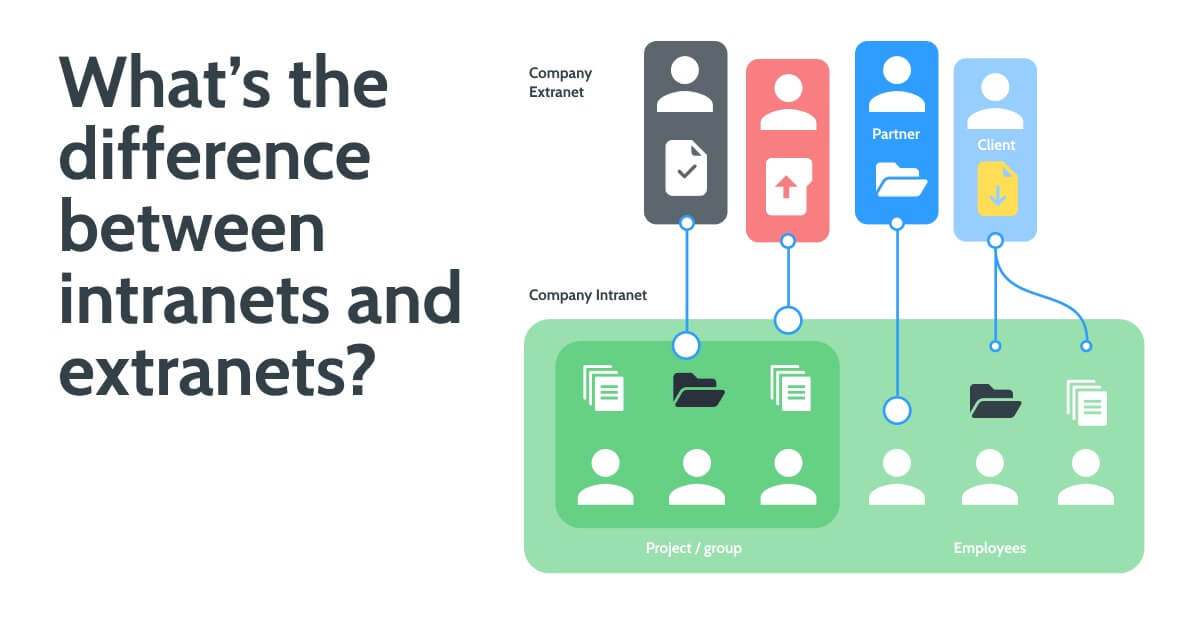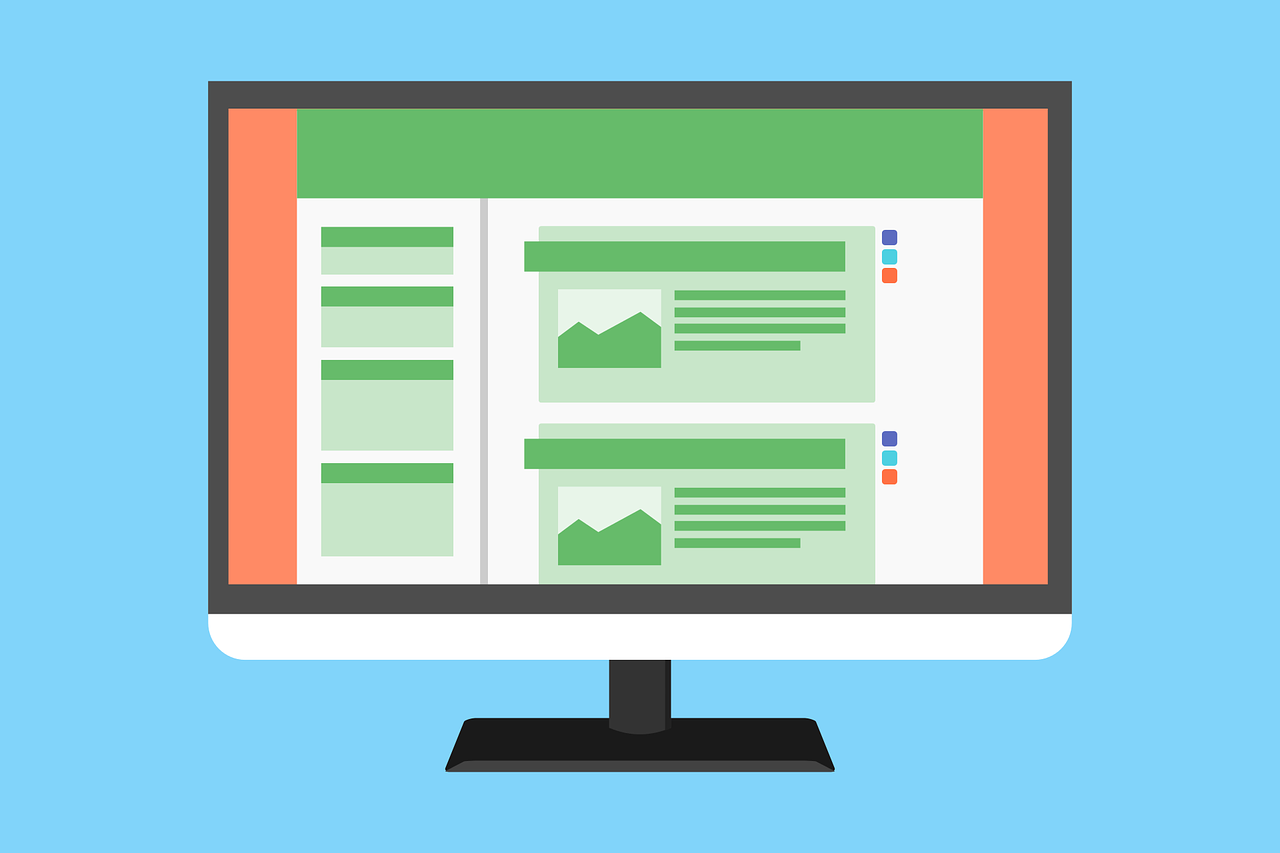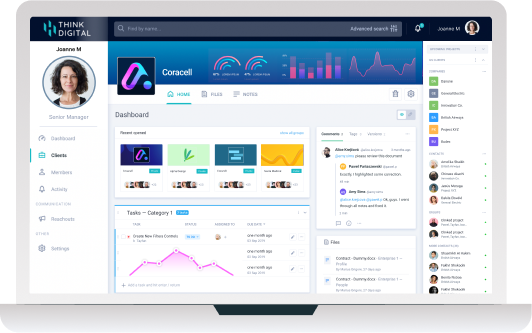Intranets and extranets are two types of digital software can often cause confusion, with people often misunderstood about the purposes of each. However, once you understand the main differences between intranets and extranets, you can be well on your way to implementing the suitable option for your business.
What is an intranet?
A solution that would have once been identified as a static platform in order to share files and information; intranets have now expanded way beyond initial capabilities.
Today, when somebody mentions the term ‘intranet’, they are more than likely referring to a digital solution – one that combines private, internal information sharing with collaboration, communication and maximum-security measures.
The main principle is that internal members of a business are the only ones who use a company intranet. And with the growth of cloud computing, intranets are no longer limited to only being accessible on-premises – employees can now securely log on to their intranet from anywhere.
Intranets can be a time-saving and cost-effective solution for facilitating collaboration between widespread teams. Typical uses would be for communicating with other employees, securely sharing business documentation and generally easing daily business processes.
So, let’s see how extranets compare.
What is an extranet?
Similar to intranets, extranets are highly secure solutions that can be deployed either in the cloud or on-premises.
A distinction you may find, however, is that extranets focus on the client-facing side of your business. Still being a private and secure solution, this basically means that an extranet is used by connections outside of your business and isn’t limited to only your internal workforce (which is where the design aspect of an extranet may be important to consider – you want to leave a good impression on clients, right?).
Using an extranet would ensure you would have direct control on how the third-party members could access and share information with your business. This can make extranets a suitable and more secure alternative to sharing attachments through email alone.
What’s more, extranets are key to building client relationships and increasing loyalty; as you’ll be able to provide real-time updates to project progress whilst maintaining conversations and uploading files for feedback and approval.
After understanding these key differences, it should be easier to determine the right solution.
The main difference between Intranet and Extranet
The main difference between Intranet and Extranet is the status of the user who gets access to the company files. Intranet is used by the employees of the same company, while Extranet is for external users, such as clients, business partners, external stakeholders and vendors.
Both of these use a secure login and are normally cloud-based portals. Often businesses have both Intranet and Extranet or a combination of the two to improve collaboration within the organization and the external users. Extranet is also known by the name of a 'client portal'.
Both Intranets and Extranets can be accessed by a specific group of users who have multi-level permissions, for instance: User, Editor, Administrator. The multi-level permissions allow you to keep control on what files can be viewed, edited, deleted or downloaded by a specific user.
Is Intranet or Extranet right for your business?
By this point, you probably have a clear understanding of what you’re looking for in a solution. If you are primarily focused on facilitating employee collaboration within your business, an intranet is a solution to look for. And if you need an environment for sharing documentation with stakeholders, a secure extranet is going to be your best bet.
Or, maybe, you’re facing the question of “What if I need both”? In that case, there is no reason why you can’t combine the two from within the same solution; so long as the software you decide on can support the functionalities of both an intranet and extranet.
In fact, many solutions accommodate the need to collaborate and share files with both internal and external users. You simply need to define the relevant permissions to ensure your client/department groups are kept separate, and you can begin sharing your files straight away.
Clinked's client portal platform provides secure and customized communication, collaboration and information sharing portals.
Related articles:











Let Us Know What You Thought about this Post.
Put your Comment Below.